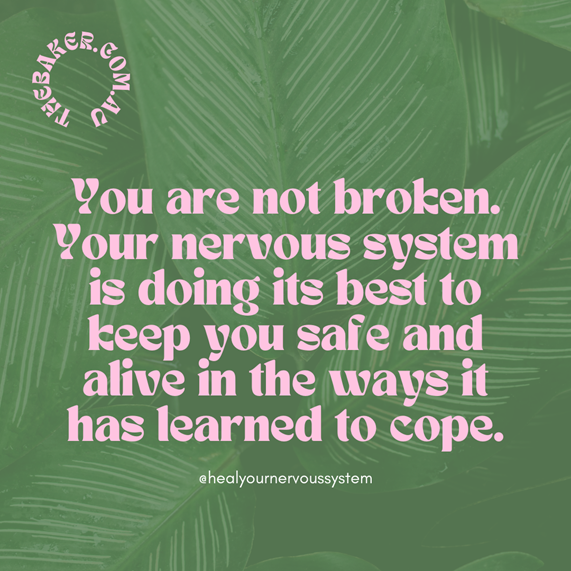Befriending your body
Befriending your body
Lots of people come to session explaining that the reason they have taken the leap to start therapy is because they came across the book, ‘The Body Keeps the Score’ by Bessel van der Kolk. A book that has consistently been the #1 New York Times Bestseller and has played a really important part in bringing the conversation of trauma and it’s significant and long-lasting impact into our awareness (if you haven’t read it, I strongly encourage you to). I think it resonates so strongly with people because it provides a scientific explanation for what people who have experienced trauma intuitively know but find hard to get understood in many (most) of our traditional western medical model spaces. I have lost count of the number of times clients have described their bodies as ‘broken’.
The body is an amazing receptor for all the different signals it receives every second of the day from our central nervous system. We feel many of our greatest pleasures (think about eating your very favourite meal) and our deepest hurts (think about a romantic break-up or the loss of a pet that you’ve experienced) in our bodies. Many of us have learned to tune out these bodily sensations, and others of us have developed quite complicated aversions to them. When we work from a somatic psychotherapy perspective, we engage in the awareness held in the body as a powerful tool and intervention in therapy. Here are a range of different concepts and approaches that we might use in somatic psychotherapy sessions:
- Developing somatic awareness
We might look at identifying areas of tension or tightness in our bodies – notice now for example if your neck or shoulders are raised, is your upper back hunched or tummy sucked-in? Then we might turn to other behaviours or feelings that help promote a feeling of calm and safety to explore gently the impact that might have on our bodily constrictions. This allows us to start to “feel” inside our skin.
- Resourcing
We use this approach in other forms of therapy like EMDR, but it refers to the way that we strengthen our innate sense of safety in the world. We might create a ‘calm place’ in the form of a visualisation exercise. And we might recruit some ‘protective’, ‘wise’ or ‘nurturing’ figures in this imagined space who fill us with a sense of strength, empowerment and safety and we might tether this to a bodily awareness when we call them to mind. In this way we can start to anchor in our body a felt sense that accompanies thoughts and images.

- Big description words
With somatic practice we look at really digging into and expanding our awareness of physical sensations. For example, if we can identify as part of recalling our traumatic experience that our chest tightens uncomfortably, instead of skipping past that because it’s providing discomfort, we actually explore this more by using lots of descriptive language. It might sound something like, “it feels like a cold, vice, squashing and squeezing both my ribs and my lungs until it feels like I can’t breathe.” As we stay with the sensations, instead of increasing we notice that the attention allows the physical feelings move and shift, and also allows us to move the focus away from distressing event details.
- Movement
“Movement helps us tap into our innate ability to heal the stories that our bodies hold” (Integrative Psychotherapy). We might use movement in a host of different ways to either explore or move through an emotion or experience that is coming up in session. We might embody what it feels like when we are feeling ashamed and then move through what it might feel like to be rid of that shame. Sometimes we exaggerate one movement to release and shift a sensation or tension in order to feel the freedom that comes from letting go. This is creative and very much based on whatever shows up in session.
- Boundary setting
Because boundaries are a foundational piece of work that comes into moving through trauma, we might explore what boundaries we are setting both verbally and nonverbally. This can take a range of different forms – we might play with saying words like “yes” or “no” or “stop” or “okay” and really feeling into the body while we say it. We may also creatively play with this such as building a literal boundary out of cushions to see how differently it feels to be in that space, before exploring how to adjust that boundary in different ways that feel safe.
Somatic psychotherapy can be a stand-alone approach to working with trauma or it can be used concurrently as part of other psychotherapeutic modalities like EMDR.
If you’d like to explore somatic psychotherapy or find new ways to connect to your body, please get in touch with us: www.theabaker.com.au / hello@theabaker.com.au / 03 9077 8194.
